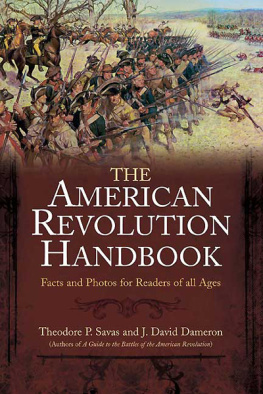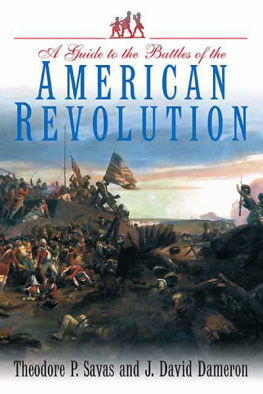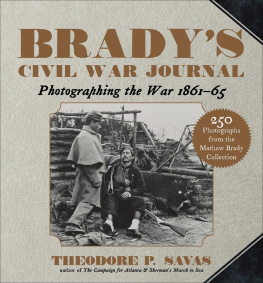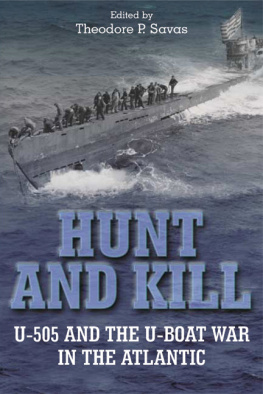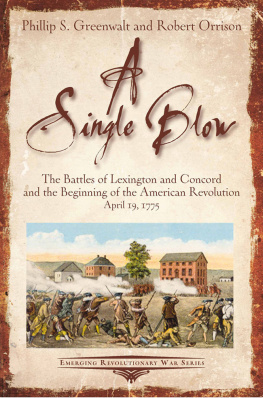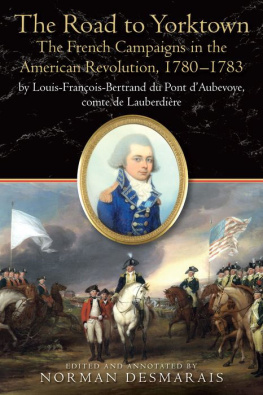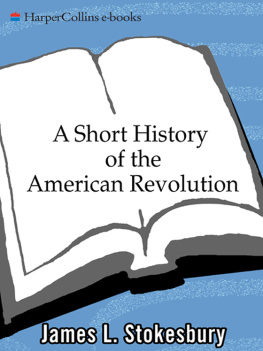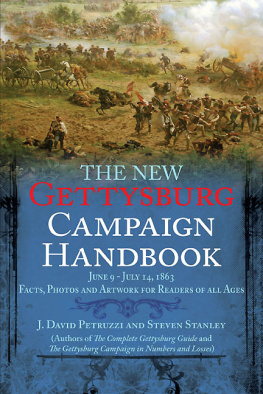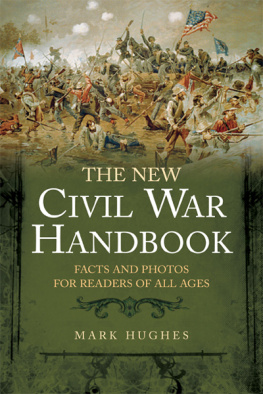

2010 by Theodore P. Savas and J. David Dameron
All rights reserved. No part of this publication may be reproduced, stored in a retrieval system, or transmitted, in any form or by any means, electronic, mechanical, photocopying, recording, or otherwise, without the prior written permission of the publisher. Printed in the United States of America.
Cataloging-in-Publication Data is available from the Library of Congress.
ISBN 978-1-932714-93-7
eISBN 9781611210620
05 04 03 02 01 5 4 3 2 1
First edition

Published by
Savas Beatie LLC
521 Fifth Avenue, Suite 1700
New York, NY 10175
Editorial Offices:
Savas Beatie LLC
P.O. Box 4527
El Dorado Hills, CA 95762
Phone: 916-941-6896
(E-mail) editorial@savasbeatie.com
Savas Beatie titles are available at special discounts for bulk purchases in the United States by corporations, institutions, and other organizations. For more details, please contact Special Sales, P.O. Box 4527, El Dorado Hills, CA 95762, or you may e-mail us at sales@savasbeatie.com, or visit our website at www.savasbeatie.com for additional information.
Cover Art: Guilford Courthouse, 15 March 1781, by H. Charles McBarron, Jr. United States Army Center of Military History (CMH) Publication 70-5, Soldiers of the American Revolution.
To my wife Carol and my children, Demetrious Theodore and Alexandra Maria.
I love you all more than you will ever know.
Theodore P. Savas
To my wife Pamela and my children, Kevin Michael and Christina Leigh.
You are my heart and soulalways.
J. David Dameron
Foreword
Colonial America and the Revolution have fascinated us both for as long as we can remember. Does not the soul stir when reading about the passions that prompted men to risk everything they owned to throw off the bonds of tyranny to embark on an experiment uncharted in human history? Does not the blood in ones veins flow faster when walking across Concord Bridge or standing before the redoubts at Yorktown while imagining the courage and tenacity necessary to face down the most mightiest army in the world? Does not peering over the shoulders of the men who penned the Declaration of Independence and later crafted our remarkable Constitutiontwo founding documents that have helped spread freedom around the world to untold millionsinstill pride and a sense of decency?
A lingering misconception confines the War for American Independence to a handful of battles in New England. Although the war did indeed break out on Lexington Green in April 1775, the conflagration spread quickly north into Canada, west into Indian Territory, south into the Carolinas, and across the seas into a massive global conflict that pulled in several other countries and would not leave even the British home islands unscathed.
As it is with any major war, learning about the American Revolution is always a bit problematic. Few people have the time or inclination to read full-length books on the subject. Unfortunately, introductory studies and materials available to most students often focus on a thin handful of wellknown engagements and personalities. The result leaves an impression that the Revolution was a limited warand by implication a subject worth only brief study. Nothing could be further from reality.
We teamed up to write A Guide to the Battles of the American Revolution (2005) in an effort to dispel this false notion. The Guide sets forth the organizations of the armies and all the major (and most of the minor) actions in a clear and organized formula that was easy to read and understand. Each entry was accompanied by an original map of the campaign/battle (most of which had never been mapped to any great extent, if at all). Our hope was that readers would more easily grasp how widespread the fighting really was, and that the American Revolution had a major impact on the course of Western society.
The New American Revolution Handbook explores similar themes, but goes well behind our prior work by introducing readers to a wide variety of aspects that were not suitable for inclusion in A Guide to the Battles of the American Revolution. Topical coverage includes organizations, the history of the key combatants, and a sizeable section on the fighting, but also includes subjects as diverse as women in the war, the role of Native Americans and African Americans, technology, voices of the war, and much more. It concludes with recommendations for more detailed research, a list of places to visit, and the Revolutionary War on the Internet. Experienced readers will readily identify the value of ship lists, organizational charts, and other detailed information.
It is our hope The New American Revolution Handbook will serve as a useful tool for teachers, students, and parents alike. As a quick fact reference book or as a leisure read, it will provide hours of exploration and immersion into a fascinating world at war that continues to impact our lives today.

Acknowledgments
The material presented in The New American Revolution Handbook was obtained from a variety of sources, including light archival research, autobiographies, and standard secondary studies about the war and its leaders. Unless otherwise noted, illustrations are courtesy of the National Archives and Library of Congress.
Jerry and Jean Dameron reviewed the material for general readership, flow, and interest. Pamela Dameron provided insightful perspectives regarding the Women, Indians,, and Did You Know? sections, while Melanie Crain and Michelle Patton, whose expertise in younger reader audiences provided invaluable insights from an educational perspective. Each of them gave freely of their time and encouraged us throughout the development process. We thank you all.
The helpful people at Savas Beatie made the publication process an enjoyable one. Editor Terry Johnston offered many valuable suggestions and helped develop the original structure of this book. Sarah Keeney, Savas Beaties marketing director, offered insight along the way, as did Veronica Kane and Kim Rouse.
Finally, our wives and families are always supportive of our efforts that must, by necessity, take us away from them and our time together.
Theodore P. Savas and J. David Dameron
Naming the War
From the opening of musket fire on Lexington Green down to the present day, different names have been assigned to the conflict waged between 1775 to 1783. While by no means comprehensive, the following list contains, in no particular order, the most popular among them.
British Names
The American War of Independence
The American Rebellion
The War of American Independence
The American War for Independence
The American Revolution
The Colonial Uprising
American Names
The American Revolution
The Rebellion
The Revolutionary War
The American War of Independence
The Great Rebellion
Voices of the American Revolution
They that can give up essential liberty to purchase a little temporary safety deserve neither liberty nor safety.
Benjamin Franklin, 1759
Then join hand in hand, brave Americans all; By uniting we stand, by dividing we fall!
John Dickenson, 1768 (final verse of The Liberty Song)

